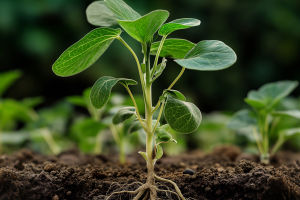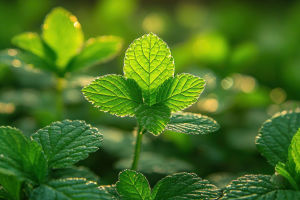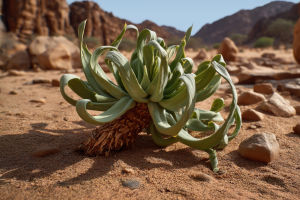Photosynthesis Explained
Have you ever looked at a leafy green plant basking in the sun and wondered how it grows without eating like we do? The secret lies in a remarkable natural process known as photosynthesis.
It powers nearly all life on Earth—even yours. In this article, we'll dive deep into the science of photosynthesis, uncovering how plants take sunlight, water, and carbon dioxide and transform them into oxygen and sugar.
Prepare to be amazed at how essential this process is for every breath you take!
What Is Photosynthesis?
Photosynthesis is a chemical process by which plants, algae, and some bacteria convert sunlight into energy. This process happens mostly in the leaves, inside special cell structures called chloroplasts. These chloroplasts contain a green pigment known as chlorophyll, which captures the energy from sunlight.
In simple terms, the photosynthesis equation looks like this:
Carbon dioxide + Water + Sunlight → Glucose + Oxygen
Or scientifically:
6CO₂ + 6H₂O + light energy → C₆H₁₂O₆ + 6O₂
Where Does Photosynthesis Happen?
Photosynthesis mainly occurs in the chloroplasts of leaf cells. These chloroplasts act like tiny solar panels. Each plant cell may contain dozens of them. The upper side of a leaf is often darker green than the underside because it holds more chloroplasts, giving it a greater ability to absorb sunlight.
Inside each chloroplast is a stack of disk-shaped membranes called thylakoids, where light energy is absorbed and chemical reactions take place.
Breaking Down the Two Main Stages
Photosynthesis has two key stages:
1. The Light-Dependent Reactions
These reactions happen in the thylakoid membranes and require sunlight. When sunlight hits the chlorophyll, it excites electrons, leading to a chain reaction. Water molecules are split in this phase, producing oxygen gas (O₂) as a byproduct. The process also produces ATP and NADPH, which are energy carriers used in the next stage.
2. The Light-Independent Reactions (Calvin Cycle)
These occur in the stroma, the fluid area surrounding the thylakoids. Even though they don't need sunlight directly, they rely on the ATP and NADPH made in the first stage. Here, carbon dioxide (CO₂) from the air is fixed into glucose (C₆H₁₂O₆), a simple sugar that plants use for energy and growth.
Why Is Photosynthesis So Important?
Photosynthesis is the foundation of almost all food chains. Here's why:
• Oxygen Production: The oxygen released during photosynthesis is essential for humans and animals to breathe.
• Food for Life: The glucose made by plants becomes the energy source not just for the plant, but also for the animals (including humans) that eat them.
• Carbon Balance: Photosynthesis helps remove carbon dioxide from the atmosphere, playing a vital role in climate regulation.
Without photosynthesis, life as we know it simply could not exist.
Do All Plants Photosynthesize the Same Way?
Not exactly. While most plants follow a common photosynthetic pathway called C3 photosynthesis, some have evolved special adaptations to survive in extreme environments:
• C4 Photosynthesis: Found in plants like corn and sugarcane, this type is more efficient in hot, sunny conditions.
• CAM Photosynthesis: Used by desert plants like cacti and pineapples, CAM photosynthesis allows them to store CO₂ at night to avoid losing water during the day.
These adaptations help plants thrive in environments where water is scarce or temperatures are high.
How Efficient Is Photosynthesis?
Despite its brilliance, photosynthesis is not 100% efficient. Only about 1–2% of the sunlight that hits a leaf is converted into chemical energy. However, this small percentage is enough to support the entire biosphere. Scientists are even studying ways to improve photosynthesis or mimic it to create cleaner energy solutions.
Artificial Photosynthesis: A Future Solution?
In recent years, researchers have been working on artificial photosynthesis—a method to replicate the plant process in labs to produce clean fuels like hydrogen. According to a 2023 paper published in Nature Communications, artificial photosynthesis systems could one day replace fossil fuels by producing energy with sunlight and water, just like plants do.
This technology holds potential for solving energy and environmental problems by reducing reliance on nonrenewable resources.
What Happens to the Glucose?
Once glucose is formed, plants can:
• Use it immediately for energy through respiration.
• Convert it into starch for storage.
• Use it to build cellulose, the main component of cell walls.
• Transform it into other molecules like proteins and fats (used in seed production and growth).
Essentially, glucose is the "currency" plants use for growth, repair, and reproduction.
What About the Oxygen?
The oxygen released during photosynthesis escapes into the air through small pores in the leaves called stomata. This oxygen is what we—and nearly all animals—depend on to survive.
According to NASA, over 50% of the world's oxygen is produced by marine plants and algae, not just trees. This shows that photosynthesis is not only a land-based process but a global one.
Let's Appreciate the Green Machines
Next time you take a breath or eat a salad, thank a plant. Photosynthesis is not just a plant trick—it's a life-support system for the planet. It's responsible for the air we breathe, the food we eat, and even the climate we live in.
Are you growing plants at home or learning about photosynthesis in school? Try placing a plant near sunlight and observing its leaf movements throughout the day—it's working harder than you think!
-
 Root Power UncoveredHow Roots Absorb Water and Nutrients: The Incredible Underground System That Keeps Plants Alive and Thriving
Root Power UncoveredHow Roots Absorb Water and Nutrients: The Incredible Underground System That Keeps Plants Alive and Thriving -
 Plant Breathing BasicsWhat Is Plant Respiration? Discover the Hidden Process That Keeps Plants Alive Day and Night
Plant Breathing BasicsWhat Is Plant Respiration? Discover the Hidden Process That Keeps Plants Alive Day and Night -
 Rocky Desert SurvivorGet Up Close with the 2,000-Year-Old Plant Thriving in Harsh Rocky Deserts!
Rocky Desert SurvivorGet Up Close with the 2,000-Year-Old Plant Thriving in Harsh Rocky Deserts!
Copyright © zogu 2021 - 2025. All Right Reserved.